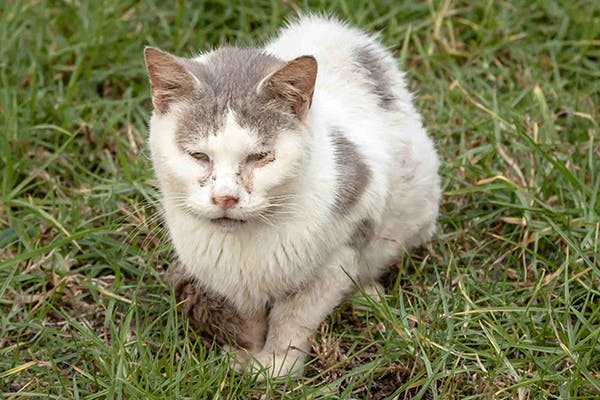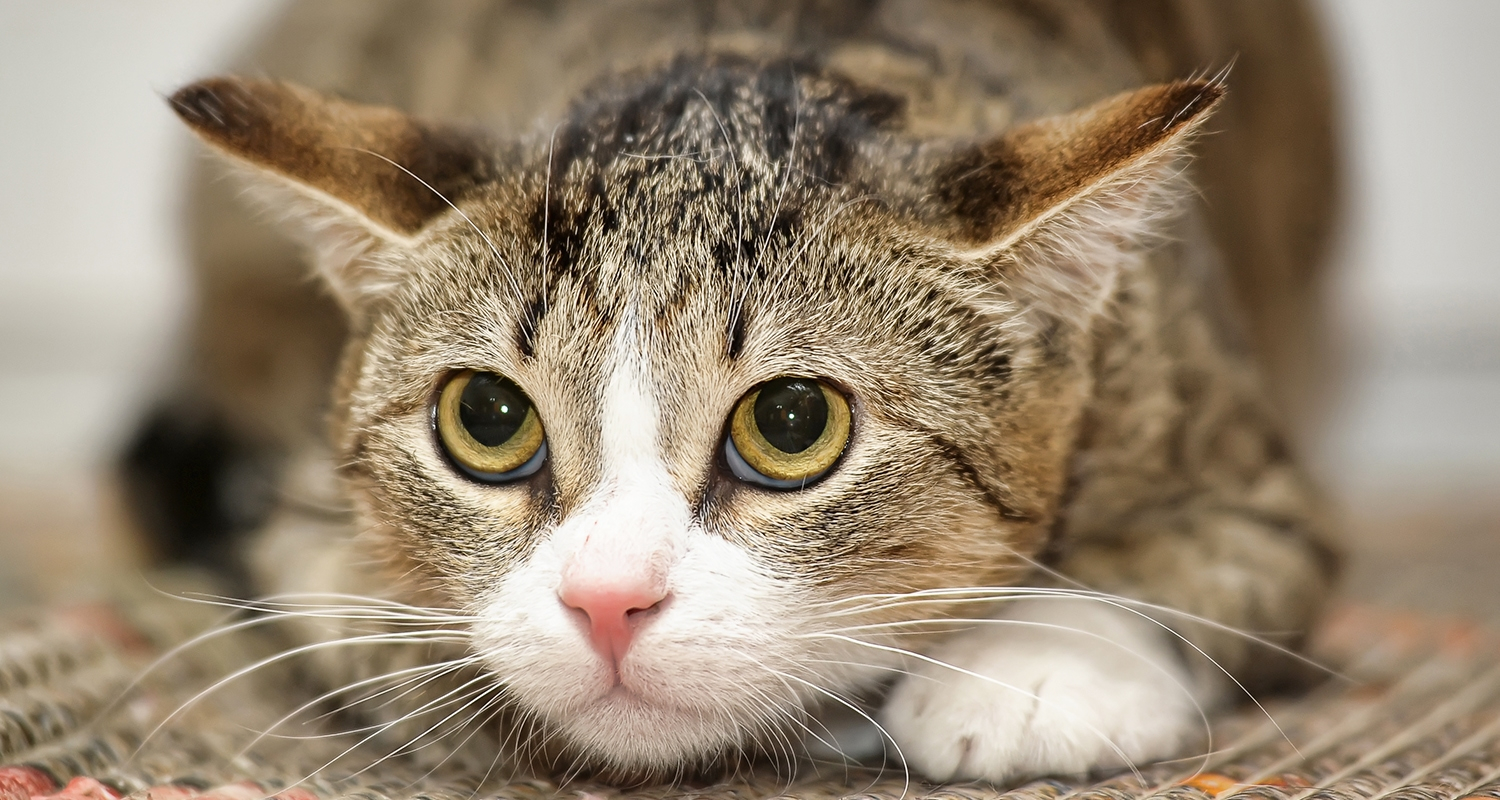
I have taken him to 2 different vets and they say he isnt FIV and that he doesnt have anything majorly wrong. Sinus congestion in cats can be minor or it may eventually lead to serious respiratory conditions like pneumonia.

Nasal congestion in cats can be the result of allergies bacterial infection or viral infection.
Severe nasal congestion cat. The most common cause of nasal congestion is cat flu usually caused by feline herpesvirus or calicivirus which is similar to a human cold. Other causes include allergies foreign body fungal infections nasal polyps neoplasia gum. Sinus congestion in cats can be minor or it may eventually lead to serious respiratory conditions like pneumonia.
Nasal congestion in cats can be the result of allergies bacterial infection or viral infection. Its also a symptom of more serious conditions like nasal tumors. Cats with rhinitis often experience some degree of nasal discharge sneezing andor loud congested breathing.
Some affected cats may paw at their face have deformity of the nose or only be able to breathe through the mouth. Discharge may be from one side of the nose unilateral or from both sides bilateral. Cat nasal congestion can be caused by an upper respiratory infection allergies a virus or even a tumor.
When your kittys breathing is wheezing and loud it may or may not be a serious health issue but difficulty with breathing is a justifiable reason for a trip to the vet. What should I look for if my cat is infected. Active infections will cause sneezing nasal discharge runny eyes cough oral or nasal ulcers sniffles fever andor a hoarse voice.
In more severely affected cats you can also see a loss of appetite severe congestion with open mouth breathing and lethargy. I have a cat with severe nasal congestion related to severe gum infection. Just returned from the vet yesterday.
Was not given an optimistic prognosis for the cats recovery as the vet thinks there is a cancerous tumor. In the meantime i am not ready and my cat does not appear ready for euthanasia. I am seeking palliative treatments to ease my cats discomfort.
However for severely affected cats we may recommend periodically sedating your cat to do a thorough nasal flush usually just 1-2 timesyear at most. This is not a permanent solution but can help stretch out the time between infections in cats who cant get relief with less aggressive management. In cats upper respiratory infections URIs are characterized by symptoms such as nasal congestion and obstructed breathing.
These sorts of illnesses are exceedingly prevalent and are equivalent in severity to the common cold in humans. They are caused by various viruses and bacteria that infect the sufferers nose throat and sinuses. I have many water containers in my home but some cats prefer moving water.
Other times I force water by using a plastic spoon or other methods. Unfortunately the problem could be more serious such as some kind of nasal tumor especially if the cat is older. Start with some steam therapy.
Run a really hot shower for 10-15 mins while you hang out with her in the bathroom. Hopefully the warm steam will help loosen the gunk in her nasal passages. Listen to your cats breathing.
Chronic nasal discharge is often accompanied by wheezing or labored breathing in cats. This signals that your cat likely has an infection in its. They will cause nasal congestion often with discharge.
Dental infections are common causes of sinus infections and sinus congestion. I hate to bring it up but in older cats nasal or oral tumors. The common causes of nasal congestion in cats include infections foreign bodies nasal inflammation nasal stenosis and cryptococcus.
There are 3 home treatments you can try. Keep the air warm humid and nursing care and provide the cats warm strong-smelling food. In cats chronic nasal and sinus inflammation frequently occurs following severe acute viral infections of the nasal and sinus mucous membranes.
Fungal nasal and sinus inflammation may be caused by the fungi Cryptococcus neoformans relatively common in cats or Aspergillus subspecies and Penicillium subspecies both relatively rare in cats. Nasal discharge sniffling heavy breathing and sneezing all indicate nasal congestion. A cat may also increasingly rub at the problematic nose even so far as causing nosebleed.
A cat with post-nasal drip may swallow frequently because discharge is running down its throatOther signs of congestion may be bad breath or swelling on the bridge of. None of my animals have had that problem so the following ideas are based on my experience as a human with chronic nasal congestion. Shut her in the bathroom with you when you take a shower.
Make it a nice hot steamy shower. This should help loosen some of the mucus. Get her to drink extra water.
Feb 6 2017. My older cat guessing around 15 keeps getting severely congested sinuses. He is constantly sneezing out mucushacking and has very loud nasal breathing.
I have taken him to 2 different vets and they say he isnt FIV and that he doesnt have anything majorly wrong. They just send him home with antibiotics. Walker is an excellent vet but I have mentioned to her using other things for the congestion during the day since the flonase is only a once daily dosage.
She was on chlorphenarimine but after 2 years quit being effective. I have heard from a friend of mine who runs a cat shelter that you can give cats afrin for stuffiness but only for. Chronic long-term upper respiratory tract URT disease also known as chronic nasal discharge is a relatively common problem in cats and can have many causes.
The syndrome refers to chronic disease affecting the nose nasal cavities or the nasopharynx the air passage immediately behind the nose. One of the most common forms is termed. Treatment for Nasal Throat Congestion in Cats.
Part of the series. Treatment for nasal and throat congestion in cats should be defin.